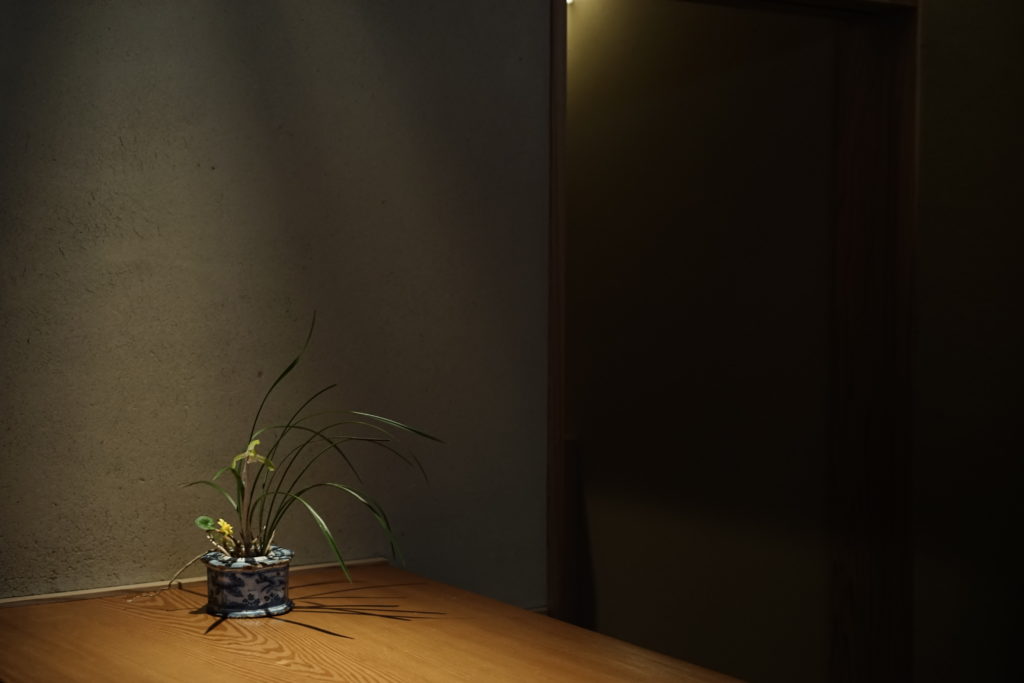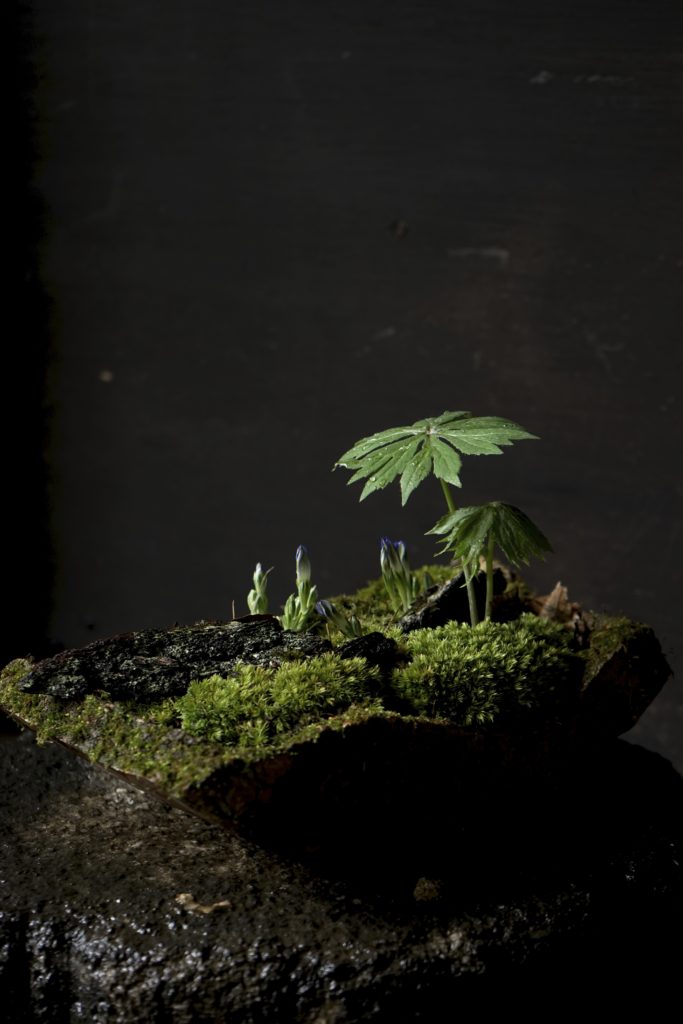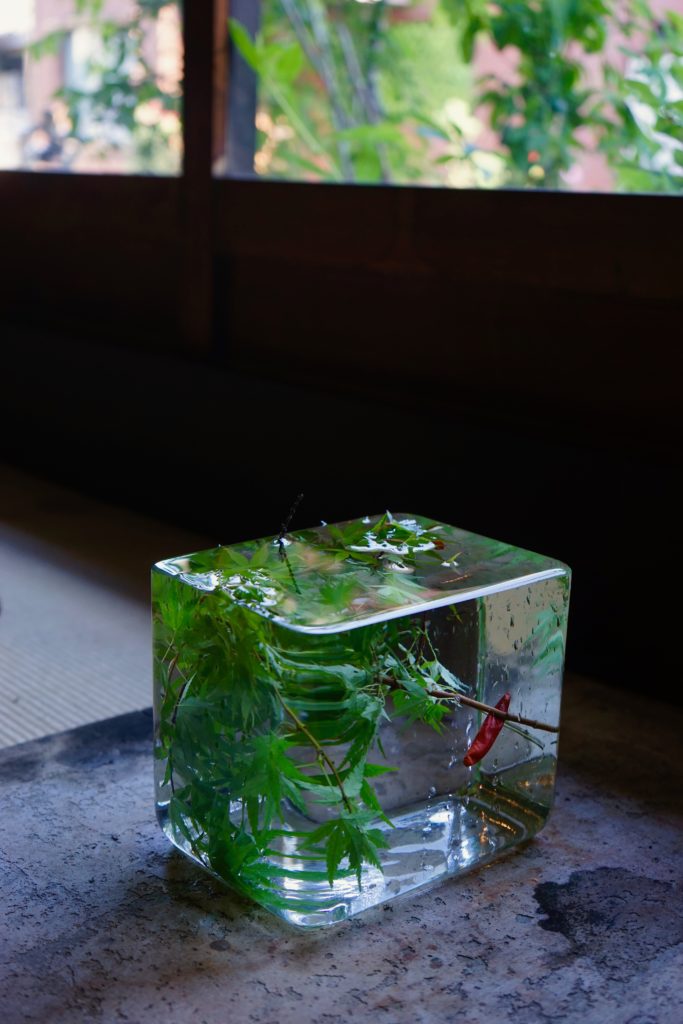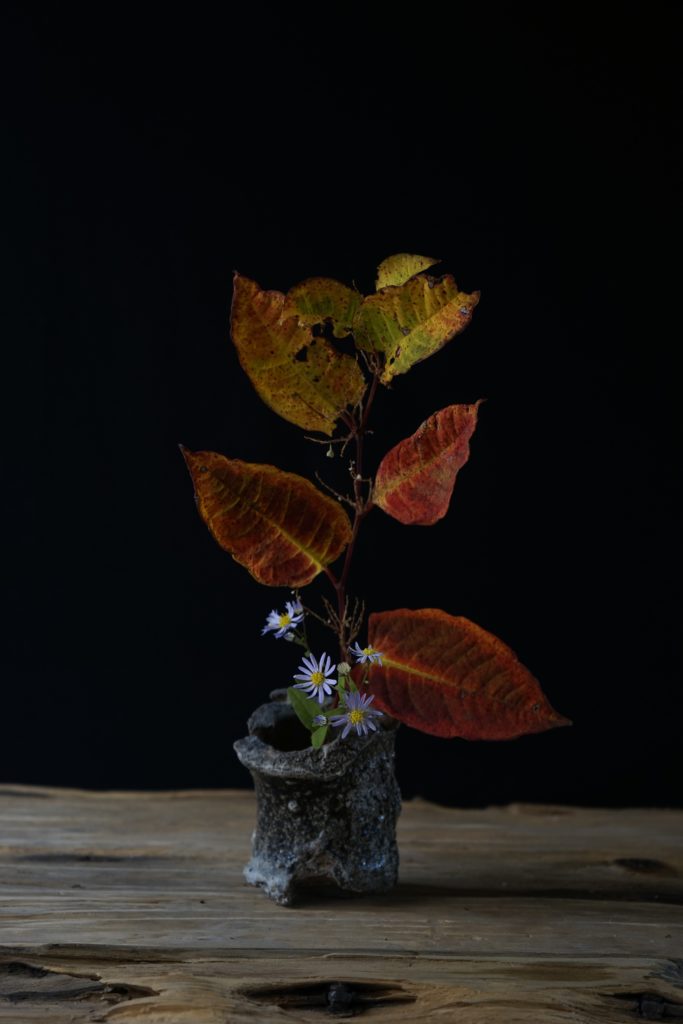Mr. Nishiyama describes his work at Mitate as appreciating and delivering the seasons. His flower arrangements feature plants found as-is in that time of the year. Mr. Nishiyama harvests wild grasses and flowers in the mountains and fields of Kyoto, and receives wildflowers picked and contributed by the neighbors. He does not source commercially distributed materials.

“Not all but many flowers on the market are pseudo flowers. While they may not be artificial, they reflect a vague sense of season and leave only a feeling of emptiness. That isn’t for me. The old lunisolar calendar indicates the waxing and waning of the moon, and the life stages of plants and animals. I like to pay homage to and give shape to this innate cycle of nature.”
In the winter, when the trees are bare of leaves and flowers are nowhere to be seen, Mr. Nishiyama gathers the mountain’s twigs and branches and arranges them in a “bouquet.” And when the weather warms up and the sounds of budding are in the air, he expresses the “flowers” lying beneath the gently bulging soil, eager to appear above the surface. He never adapts the flowers to meet human needs or seeks to bend the laws of nature.


“The traditional Japanese kaiseki cuisine is a good example — the entire concept behind kaiseki is to relish the freshness of seasonal ingredients. As diners, we gladly go out of our way to savor the bitter butterbur shoots that sprout during the transition from winter to spring. If our only purpose for eating was to pursue pleasant flavors, we likely would not enjoy the butterbur shoots. However, kaiseki is deeper than just the sensation of taste, it takes into account design, colors, nutrition and time. With butterbur we are consuming the energy of the season. I want to translate that sensation into my flower designs.”
Just as universal palatability isn’t the sole criterion for a tasty dish, lush, brilliant growth isn’t the sole criterion for a beautiful flower arrangement. The joy of a seeing a single bloom unfold, or the anticipation conjured by hints of yet unseen flowers—this image is also an expression of beauty.


“There was a time in the past when artists analyzed one another’s intentions behind an arrangement with only a single flower. Why is the flower facing sideways or backward, or the leaf bent and folded over? They looked beyond what could be seen with the eye and tried to interpret the artist’s thoughts and emotions. I’m interested in striking up a similar dialogue in the minds of modern viewers.”
Mr. Nishiyama’s work at Mitate is a heartfelt celebration. The flower arrangements transcend superficial features like size and color, and embrace and appreciate the genuine coming and going of the seasons.













